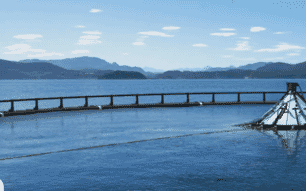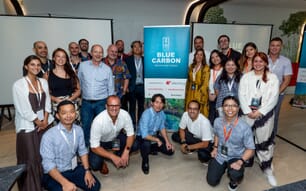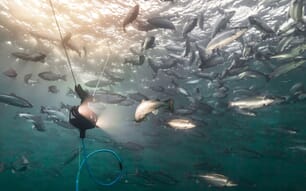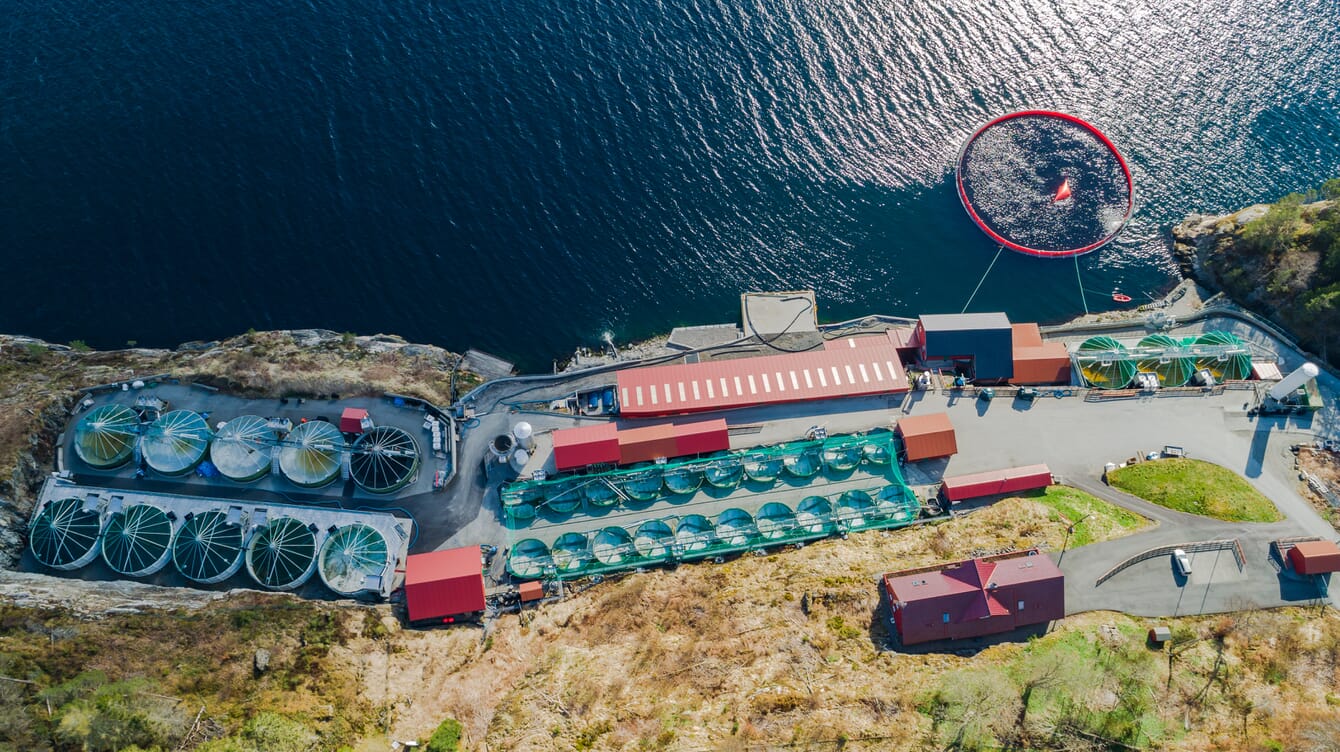
Current state and market drivers
Based on research and global reports, the current global RAS project pipeline (operating and future planned RAS facilities) consists of roughly 350 commercial projects (hatcheries excluded). These are mainly grouped around a handful of fish species.
Europe has by far the highest number of both current and planned RAS facilities. This is primarily the result of Norway’s role as a leader in technology adoption within the sector and its extensive salmon production. Other European countries have significantly fewer projects in the pipeline, while the Americas (especially Chile, the US, and Canada) present promising opportunities for future growth.
Additionally, there is growing interest in using RAS technology in shrimp production outside the tropical coastal regions where it traditionally takes place, with major markets in the US, Europe and China. Although shrimp RAS currently only produce small volumes (up to 50 tonnes each), several companies plan to invest in systems that can produce 1,000-2,000 tonnes each.
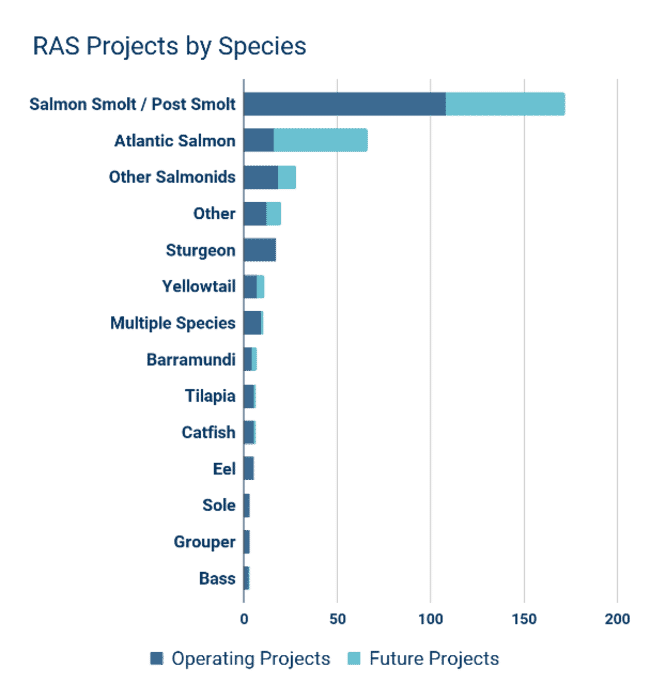
© Spheric - Land-based aquaculture report 2023 third edition. Visualization: Hatch Innovation Services
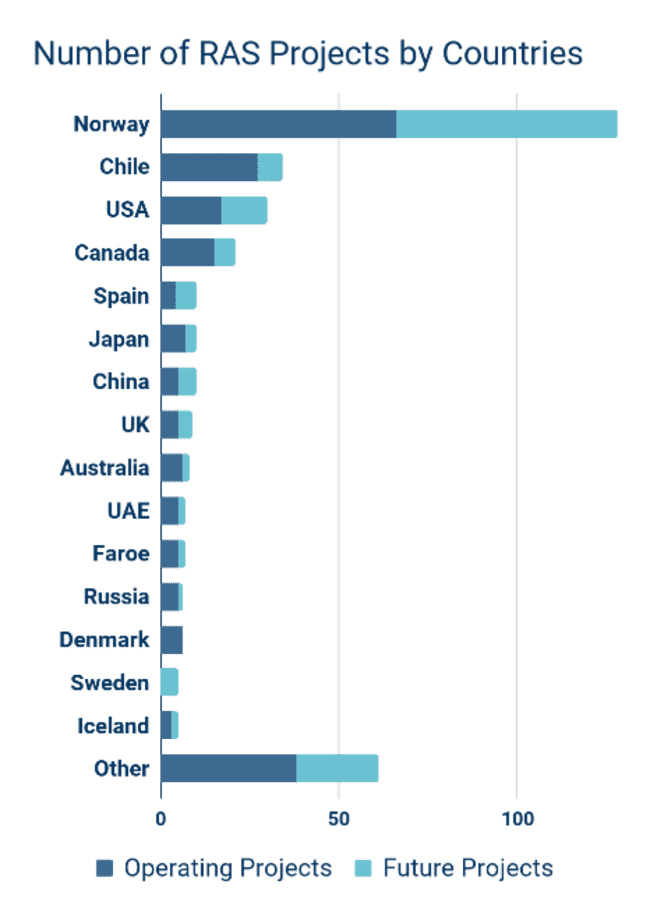
© Spheric - Land-based aquaculture report 2023 third edition. Visualization: Hatch Innovation Services
With great power, comes great responsibility
In traditional systems, the main concern is looking after the animals, while in RAS farmers also need to look after the water (pumping, filtering, treating, monitoring), as well as the bacterial populations that inhabit the biological filter, which is the heart of any RAS facility. RAS farming relies on mechanical and biological filtration, as well as disinfection (UV and ozone), degassing, heating, cooling and oxygenation to maintain water quality and support high-density biomass.
All of these require complex equipment. As any farmer knows, the more equipment you have, the more equipment malfunctions or failures you can experience. And, usually, anything that can go wrong will go wrong at some point. The equipment also increases the system's dependency on its energy sources and the need for backup systems and redundancy plans.
These technological needs have fuelled the growth of equipment and tech companies offering solutions to streamline the different processes within the facilities and support the operators in making the most use of the system's potential. RAS-tailored equipment includes protein skimmers, automated fish counting and grading, biomass and monitoring cameras, centralised feeding systems, electro-chemical water treatment (to replace biofilters), data and management software, next-generation pH, and nitrate and nitrite sensors.
For now human supervision and intervention remain vital, with manual overrides and staff readiness to ensure that emergencies can be managed swiftly. Despite the availability of technologies, not all farmers use the whole spectrum of products due to their high costs, the challenges of implementing high-tech solutions in low-tech environments, and conservative attitudes to farming.
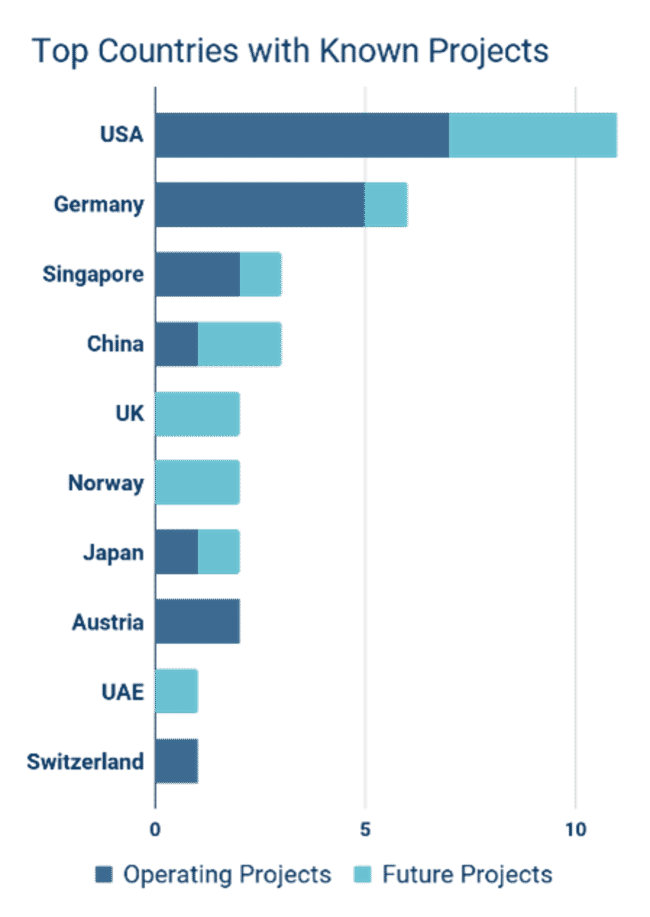
© Spheric - Land-based aquaculture report 2023 third edition. Visualization: Hatch Innovation Services
Production trends
In terms of production scale, there are some clear trends that show how the industry is trying to adjust according to the RAS learning curve. More projects are looking at smaller and modular systems, such as Farm in a Box by AquaFounders Capital – which is led by industry veterans from Kingfish Company and Atlantic Sapphire.
Regarding target fish size, in Atlantic salmon RAS, more farmers are increasing the size of their post-smolts beyond 250 g, in some cases even up to 1 kg, before shipping them to sea cages for grow-out. In 2022, roughly 67.5 million out of the 425 million total smolts sold in Norway were over 250 g, amounting to a share of almost 16 percent.
Moreover, in 2022 the average value of the large category was 32.9 NOK/smolt, while for the smaller category, it was 16.1 NOK/smolt.
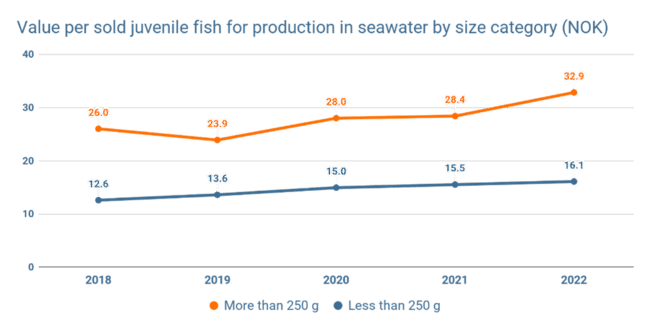
© Norwegian Directorate of Fisheries Smolt Production Statistics. Visualisation: Hatch Innovation Services
Recently, hybrid flow-through systems (HFTS) have gained interest and investments in the salmon farming industry as a potential way to mitigate challenges from traditional and RAS systems and provide positive results “enjoying both worlds”. Based on 30-60 percent of the water being treated and reused, this concept isn’t new, but has only recently been used for salmon grow-out. Site selection, permitting, and supportive legislation are key limiting factors, along with the necessity of being located on the coast with a suitable source of water quality and temperature. Rabobank predicts that salmon production from flow-through farms may exceed 100,000 tonnes a year by 2030, inspired by the success of the current generation of projects in Iceland and Norway. Major players like Icelandic Salmon (SalMar), Arctic Fish (Mowi) and Ice Fish Farm (Måsøval) all have a significant presence.
Outlook
RAS expansion is being severely hampered by an increase in construction costs, a lack of capex financing, rising electricity costs, and a lack of skilled and experienced operational staff. Due to significant capex requirements, implementation of RAS farms for the production of fully grown fish has been slow. There have been successful cases where fish have grown to around 3-5 kg, but significant technical challenges have arisen in facilities aiming for large production volumes.
Additionally, a notable number of mass mortality events have occurred that were associated with systems design or equipment failure. These incidents are not a big surprise (as one experienced farmer once told me, “You have to kill a million fish in order to raise a million fish”), but they have certainly contributed to scepticism about the feasibility of large-scale RAS facilities.
Despite these issues, RAS production is still considered promising, with steady growth trends evident across various regions, although most are still in the planning or construction phases.
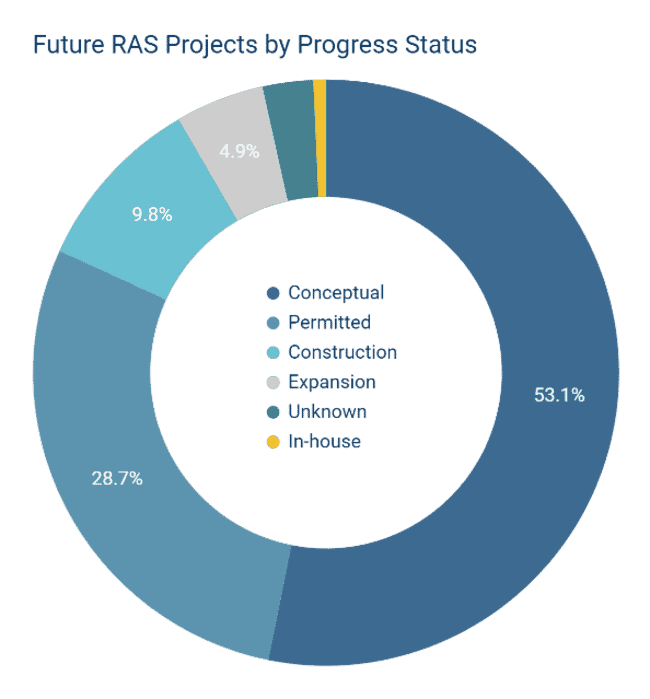
© Spheric - Land-based aquaculture report 2023 third edition. Visualisation: Hatch Innovation Services
Learning from previous projects, new RAS developers will need to bear in mind these four key considerations:
Application: what life cycle stage – hatchery, nursery, post-smolt, or grow-out – makes sense in terms of budget and target market?
Location: needs to reflect the facility’s inputs and outputs (electricity, fresh/salt water access, wastewater discharge, supply chain routes, and proximity to the target market). And will it attract governmental and local community support?
Species: selecting a species that is well-suited for RAS, can provide the best prices, fits the target market, and is applicable to the site location (although a RAS facility can maintain almost any indoor climate, raising a cold water species in warm areas could have deal-breaking energy costs to maintain proper water temperatures).
Scale: what is the correct scale or the scaling strategy? Smaller, modular systems can provide flexibility and adaptability to local markets, allowing for easier scaling and reduced capital risks. Poor design, worsened by inefficient operation, can increase opex to the point where an economy of scale is hard to reach.
Where do we go from here?
Predicting the industry's trajectory is not easy, but recent announcements of successful fundraising for new projects, such as Pure Salmon project in Japan, Oceanloop in Gran Canaria, and newly identified sites, such as The Black Cod Company in the Netherlands and Barramundi Group in Brunei Darussalam suggests an optimistic outlook. Additionally, The Canadian government's announcement to phase out open net-pen salmon farming in British Columbia might encourage additional RAS projects in Canada (although criticism has been voiced that RAS is not financially viable and not yet mature enough to handle the required volumes).
On the other hand, events such as RAS technology providers going out of business, RAS facilities being put up for sale by companies mitigating financial issues, equipment failure-related mass mortality events, or poor financial results, suggest a challenging reality for the companies actively doing business in this space.
With these dynamics at play, many questions remain: can grow-out RAS be financially viable? What is the right project size? What are the right regions for RAS operations, and for which species? How much automation should be integrated into the process? And can AI be a decision-making game changer?
Industry experts seem to have different opinions. As Myrtle Reed, an American author and poet said: "It all depends on the way you look at it. The point of view is everything in this world."
If you’re interested in learning more about this topic, get in touch with us at Hatch Innovation Services.

